Mysterious Lost Kingdom Of Urartu And Its Enigmatic History
A. Sutherland - AncientPages.com - The lost kingdom of Urartu is shrouded in mystery because very little is known about this ancient place and the origin of its people.
The capital of Urartu was the rock fortess Tushpa. Credit: Adobe Stock - Koraysa
Still today, archaeologists look for more traces of the mysteriously lost kingdom of Urartu, as the Assyrians called it. The Hebrews referred to it as Ararat, and in more modern times, it has been named the Kingdom of Van.
The kingdom's beginnings are lost in the mists of pre-history. Still, Urartu was situated near Lake Van and the mountainous plateau between Anatolia, Mesopotamia, the Iranian Plateau, and the Caucasus Mountains before it was destroyed. The earliest documents mention the land of Urartu can be found in Assyrian sources. This Iron Age kingdom was established around the mid-ninth century BC and conquered by the ancient Iranian people of Medes in the early 6th century BC.
Based on what we know, the people of Urartu were famous metalworkers and spoke a language related to Hurrian (a language with no other known connections). They adapted the Assyrian cuneiform script for their purposes.
Although it cannot be said with certainty, Urartu was ruled by a single dynasty from the ninth century, expanding three kingdoms to the south when Assyria was weak.
Two of the Urartian gods holding an unknown object. The plates were decorations for other items and were found at Rusahinili, an ancient Urartian fortress in Turkey. Credit: Credit: Dosseman - CC BY-SA 4.0
The true origin of the people of Urartu has yet to be discovered. Some historians think these people migrated from somewhere to the west into the Armenian plateau, then, for the most part, known as Nairi. They called themselves Khaldians or children of the god Khaldis, just as the name of the Assyrians reflects the name of their god Assur.
In 1939, Professor Shestokov, a Soviet Russian historian, wrote that the oldest states of the Soviet Union were founded 3,000 years ago to the south of Transcaucasia. The oldest among them was called Urartu. Its kings ruled over Georgian tribes.
In 1827, German scholar Friedrich Eduard Schulz first attempted to study the ancient ruins. Schulz made copies of several inscriptions and had these sent back to Paris.
Unfortunately, Schulz and his party were attacked by bandits in Kurdistan and killed in 1829.
The copies were not published until 1840 in Paris, where there were shown to be various inscriptions in Ancient Persian and Assyrian cuneiform, itself not fully translated, while the rest of the inscriptions were in an unknown language.
Left: Bronze figurine of the winged goddess Tushpuea, with suspension hook. Credit: Evgeny Genkin - CC BY 2.5 Right: Bell inscribed with the Urartian royal name Argishti, 786–756 b.c. Credit: Zunkir - CC BY-SA 4.0
In 1847 and 1850, new copies were taken of the inscriptions. Several attempts have been made to decipher the cuneiform inscriptions of Armenia through the present-day Armenian language.
The failure of these attempts has led some to believe that the inscriptions must be in some unknown, alien tongue, neither Indo-European nor Semitic.
Sooner or later, everything must end, and so the existence of the Kingdom of Urartu. The fall of the Kingdom of Urartu is shrouded in darkness. The kingdom succumbed in around 585 - 590 BCE. However, there is no written account of this event, and this timescale is not undisputed.
Archaeologist Boris Piotrovsky, who headed the excavation of Teishebaini, now Karmir Blur in modern Armenia, discovered remains of a city besieged and consumed in a great conflagration during a final night attack. He also uncovered several treasures and everyday artifacts taken to the citadel when the town was attacked.
Reconstruction of an Urartian tripod stand used for burning incense and for illumination decorated with lions made of ivory, 8th century BC, from Altintepe, Museum of Anatolian Civilizations, Ankara. Credit: Carole Raddato - CC BY-SA 2.0
The people of Urartu knew their kingdom was about to vanish and made a last attempt to hide some precious objects, hoping they would survive as a reminder of the kingdom's existence.
Unfortunately, many artifacts, including most inscribed objects, have not been excavated. Only a few (such as the cemetery at Altintepe) have been properly excavated.
It means that archaeologists have been deprived of complete and contextual knowledge of the culture, and precious history has been lost again.
For example, many Urartian cemeteries with hundreds of burial goods have been robbed.
This brilliant era of Urartu did not last long, and the kingdom disappeared rapidly from history.
Updated on July 14, 2023.
Written by – A. Sutherland AncientPages.com Staff Writer
Copyright © AncientPages.com All rights reserved. This material may not be published, broadcast, rewritten or redistributed in whole or part without the express written permission of AncientPages.com
Expand for references
References:
Armen Asher, Teryl M. Asher, The Peoples of Ararat
Lardinois R. Scholars and Prophets: Sociology of India from France in the 19th-20th Centuries
More From Ancient Pages
-
 Pre-Columbian Societies Declined 2,000 Years Ago Due To Sea Level Fall
Archaeology | Dec 22, 2021
Pre-Columbian Societies Declined 2,000 Years Ago Due To Sea Level Fall
Archaeology | Dec 22, 2021 -
 Ice Age Teens Experienced Puberty Stages Similar To Modern Adolescents, Study Reveals
Archaeology | Sep 13, 2024
Ice Age Teens Experienced Puberty Stages Similar To Modern Adolescents, Study Reveals
Archaeology | Sep 13, 2024 -
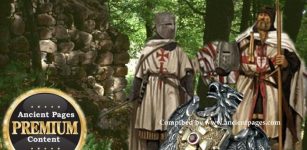 Mystery Of The Lost Beverina Castle – Did Knights Templar Know Where It Was?
Ancient Mysteries | Jan 21, 2018
Mystery Of The Lost Beverina Castle – Did Knights Templar Know Where It Was?
Ancient Mysteries | Jan 21, 2018 -
 8-Year-Old Boy Finds Unusual Viking Age Artifact On Gotland Island, Sweden
Archaeology | Sep 18, 2023
8-Year-Old Boy Finds Unusual Viking Age Artifact On Gotland Island, Sweden
Archaeology | Sep 18, 2023 -
 Stone Toilet Of A First Temple Period Luxury Villa Reveals The Jerusalem Elite Suffered From Infectious Disease
Archaeology | Jan 4, 2022
Stone Toilet Of A First Temple Period Luxury Villa Reveals The Jerusalem Elite Suffered From Infectious Disease
Archaeology | Jan 4, 2022 -
 3-D Reconstructions Of Three Wooden Boats Found At Ancient Port In Italy
Archaeology | Jun 23, 2020
3-D Reconstructions Of Three Wooden Boats Found At Ancient Port In Italy
Archaeology | Jun 23, 2020 -
 First Time A Meteorite Killed A Person In Known History Revealed In Old Documents
Archaeology | Apr 29, 2020
First Time A Meteorite Killed A Person In Known History Revealed In Old Documents
Archaeology | Apr 29, 2020 -
 Draugr – Vikings Feared This Ugly Living Dead With Prophetic Visions
Featured Stories | May 24, 2020
Draugr – Vikings Feared This Ugly Living Dead With Prophetic Visions
Featured Stories | May 24, 2020 -
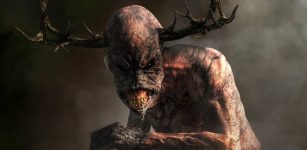 Wendigo: Cannibalistic Shapeshifter In Mythology Of Indians Of North America And Canada
Featured Stories | Sep 3, 2016
Wendigo: Cannibalistic Shapeshifter In Mythology Of Indians Of North America And Canada
Featured Stories | Sep 3, 2016 -
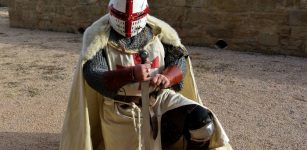 Were The Knights Templar Guilty Or Innocent Of The Crimes Laid Against Them?
Featured Stories | Dec 24, 2020
Were The Knights Templar Guilty Or Innocent Of The Crimes Laid Against Them?
Featured Stories | Dec 24, 2020 -
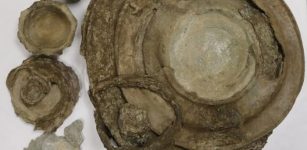 Rare 2,000-Year-Old Roman Hoard Discovered In Suffolk
Archaeology | Jul 5, 2023
Rare 2,000-Year-Old Roman Hoard Discovered In Suffolk
Archaeology | Jul 5, 2023 -
 Mystery Of 2000-Year-Old Basel Papyrus Likely Written By Physician Galen – Is Solved
Archaeology | Jul 14, 2018
Mystery Of 2000-Year-Old Basel Papyrus Likely Written By Physician Galen – Is Solved
Archaeology | Jul 14, 2018 -
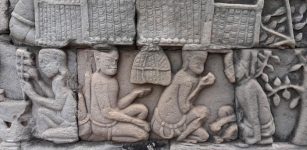 What Can The Fate Of Ancient Cities Teach Us About Surviving Climate Change
Archaeology | Oct 1, 2021
What Can The Fate Of Ancient Cities Teach Us About Surviving Climate Change
Archaeology | Oct 1, 2021 -
 Scientists Found Mysterious Prophecies In Ancient Egyptian Pyramid – Are They Linked To The Strange Visions Some Experience Inside?
Featured Stories | Dec 17, 2024
Scientists Found Mysterious Prophecies In Ancient Egyptian Pyramid – Are They Linked To The Strange Visions Some Experience Inside?
Featured Stories | Dec 17, 2024 -
 Huge Subterranean Pre-Columbian Shaft Tombs In Tierradentro, Colombia
Featured Stories | Apr 28, 2021
Huge Subterranean Pre-Columbian Shaft Tombs In Tierradentro, Colombia
Featured Stories | Apr 28, 2021 -
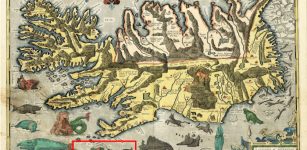 Ancient Manuscripts About Sea Monsters Solve An Ocean Mystery
News | Mar 1, 2023
Ancient Manuscripts About Sea Monsters Solve An Ocean Mystery
News | Mar 1, 2023 -
 Ancient DNA Pushes Herring Trade Back To The Viking Age
Archaeology | Oct 26, 2022
Ancient DNA Pushes Herring Trade Back To The Viking Age
Archaeology | Oct 26, 2022 -
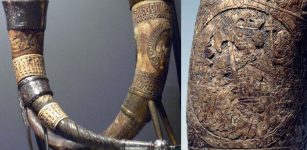 Ancient Icelandic Drinking Horn Reveals An Interesting Story About Saint-King Olaf
Ancient Traditions And Customs | Mar 29, 2017
Ancient Icelandic Drinking Horn Reveals An Interesting Story About Saint-King Olaf
Ancient Traditions And Customs | Mar 29, 2017 -
 Gigantic Asipatra: Terrifying Mythical Monster Bird In Hindu Beliefs
Featured Stories | Jun 14, 2017
Gigantic Asipatra: Terrifying Mythical Monster Bird In Hindu Beliefs
Featured Stories | Jun 14, 2017 -
 Indus Valley Civilization Far Ahead Of Its Time Has Baffled Scientists For Centuries
Ancient Technology | May 18, 2017
Indus Valley Civilization Far Ahead Of Its Time Has Baffled Scientists For Centuries
Ancient Technology | May 18, 2017




